Incorporating technology into middle school learning can be a daunting task, especially when considering the potential distractions it can bring. With the prevalence of smartphones, social media, and online gaming, it can be challenging to keep students focused on their studies. However, with the right strategies in place, you can effectively integrate technology into the classroom while minimizing distractions.
First and foremost, it’s important to establish clear guidelines for technology use in the classroom. This includes setting expectations for when and how devices can be used, as well as consequences for misuse. Additionally, utilizing educational software and apps that align with the curriculum can help keep students engaged and on task. By providing focused technological resources and closely monitoring students’ usage, you can create a learning environment where technology is a valuable tool rather than a distraction.
Key Takeaways:
- Implement clear guidelines: Establish specific rules for technology use in the classroom to minimize distractions and promote focused learning.
- Use technology for interactive learning: Integrate tech tools that encourage active engagement and collaboration, such as educational apps, games, and interactive whiteboards.
- Provide structured technology time: Designate specific periods for using digital devices and ensure that students understand the purpose and objectives for each activity.
- Monitor and control internet access: Utilize software and tools to filter and monitor online content, preventing students from accessing distracting or inappropriate websites.
- Encourage responsible digital citizenship: Teach students the importance of using technology responsibly, including proper etiquette, online safety, and critical thinking skills when navigating digital information.
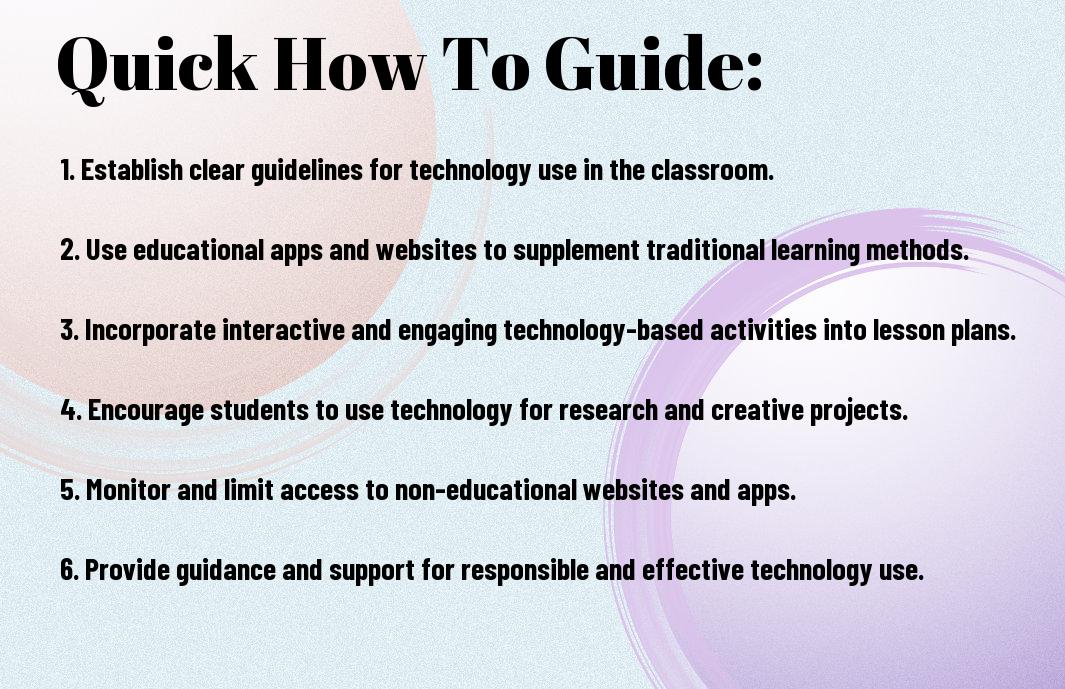
Assessing the Needs of Your Middle School Classroom
Some of the most important decisions you will make when incorporating technology into your middle school classroom involve assessing the specific needs of your students and teachers. By taking the time to identify these needs, you can ensure that the technology you incorporate enhances learning without becoming a distraction.
Identifying Educational Technology Goals
As you begin to incorporate technology into your middle school classroom, it’s important to have clear educational technology goals in mind. Consider what specific skills and knowledge you want your students to gain from using technology. Whether it’s improving research and critical thinking skills, utilizing digital tools for collaboration, or enhancing creativity and problem-solving, having well-defined goals will guide your technology integration efforts.
Evaluating Current Technology Resources
Before introducing new technology into your middle school classroom, it’s crucial to evaluate the current technology resources available to you. Take stock of the devices, software, and online resources that are already in use. Assess their effectiveness and determine if there are any gaps that need to be addressed. This evaluation will help you make informed decisions about what additional technology may be necessary to meet your educational technology goals.
Surveying Student and Teacher Readiness
Another important aspect of assessing the needs of your middle school classroom is to survey the readiness of both your students and fellow teachers. You need to consider the level of comfort and familiarity with technology that exists among your students and colleagues. Understanding their readiness will enable you to provide appropriate support and training where needed. It’s essential to ensure that everyone is equipped with the necessary skills and knowledge to effectively integrate technology into the learning process without distractions or setbacks.
Selection of Appropriate Technology Tools
Keep in mind that the key to effectively incorporating technology into middle school learning without distractions lies in the careful selection of appropriate technology tools. In this chapter, we will explore the criteria for choosing educational technology, the importance of examining age-appropriate tools and platforms, as well as integrating tools aligned with curriculum standards.
Criteria for Choosing Educational Technology
When selecting technology tools for middle school learning, it is important to consider a few essential criteria. Firstly, the tools should be aligned with the learning objectives and the curriculum. They should enhance the learning experience, rather than be a distraction. Secondly, consider the usability and ease of navigation of the technology tools. Complex or difficult-to-navigate tools may hinder the learning process rather than facilitate it. Lastly, ensure that the technology tools are age-appropriate and cater to the cognitive abilities of middle school students.
Examining Age-Appropriate Tools and Platforms
It is crucial to examine whether the technology tools and platforms are age-appropriate for middle school students. This means considering not only the subject matter, but also the interface, content, and level of complexity. Tools that are not age-appropriate may lead to distractions and difficulties in engagement. Look for technology tools that are designed specifically for middle school students, with content that is relevant and engaging for their age group.
Integrating Tools Aligned with Curriculum Standards
Integrating technology tools that are aligned with curriculum standards is essential for ensuring that the use of technology enhances the learning experience. By incorporating tools that reinforce the curriculum, you can ensure that students are not only engaged, but also meeting the necessary learning objectives. Look for technology tools that offer clear alignment with the curriculum and provide opportunities for students to apply their learning in meaningful ways.
Creating a Distraction-Free Technology Policy
Despite the many benefits of incorporating technology into middle school learning, it is important to establish a distraction-free technology policy to ensure that students stay focused on the task at hand. Without a clear policy in place, the use of technology can easily become a source of distraction rather than a valuable learning tool.
Establishing Ground Rules and Expectations
When creating your distraction-free technology policy, it is essential to establish clear ground rules and expectations for technology use in the classroom. This may include guidelines for when and how devices can be used, as well as consequences for inappropriate use. By clearly outlining the expectations, you can empower students to use technology responsibly and minimize distractions during learning activities.
Tips for Minimizing Digital Distractions
In addition to establishing ground rules, there are several tips for minimizing digital distractions that can be implemented in the classroom. Encouraging students to turn off notifications on their devices, use website blockers during specific activities, and practice time management can all help to minimize distractions. Additionally, providing students with designated technology-free time for focused learning can also be beneficial. Knowing how to manage and minimize digital distractions is essential for creating a distraction-free learning environment.
Enforcing Technology Etiquette in the Classroom
Enforcing technology etiquette in the classroom is crucial for maintaining a distraction-free environment. This includes monitoring students’ use of devices during class time and addressing any inappropriate use of technology. Providing students with reminders of the distraction-free policy and reinforcing the importance of respectful and responsible technology use will help to foster a culture of focus and engagement in the classroom.
Structured Technology Integration
For middle school students, structured technology integration is essential for incorporating technology into learning without distractions. This means carefully planning and implementing technology use in a way that supports and enhances the curriculum while minimizing the potential for distractions. Structured technology integration involves phased implementation, designing engaging tech-enhanced lesson plans, and considering factors for sustaining student focus and engagement.
Phased Technology Implementation
When incorporating technology into middle school learning, it’s important to approach it in a phased manner. Introduce new technologies gradually, allowing students to become familiar with each tool before moving on to the next. This approach helps prevent overwhelm and ensures that students and teachers have the necessary support and resources to use the technology effectively. Additionally, phased implementation allows for assessment and adjustment, ensuring that the technology is having a positive impact on learning.
Designing Engaging Tech-Enhanced Lesson Plans
Creating engaging lesson plans that incorporate technology is crucial for keeping students focused and motivated. When designing these plans, consider how technology can be used to enhance the learning experience, rather than simply as a replacement for traditional methods. Whether it’s through interactive activities, multimedia presentations, or collaborative projects, incorporating technology in a meaningful way can capture students’ attention and deepen their understanding of the subject matter.
Factors for Sustaining Student Focus and Engagement
When integrating technology into middle school learning, it’s important to consider several factors to sustain student focus and engagement. Provide clear guidelines and expectations for technology use in the classroom, emphasizing the educational purpose of the tools. Incorporate active learning strategies that encourage student participation and interaction with the technology. Offer a variety of tech-enhanced activities to cater to different learning styles and interests. Consider the layout of the classroom and the accessibility of technology to ensure that it supports rather than distracts from learning. Assume that when students are engaged and invested in the technology integration process, distractions are less likely to occur.
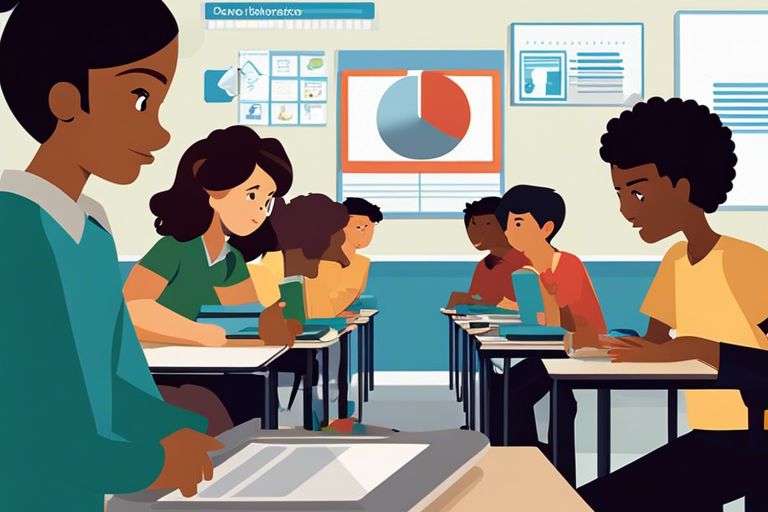
Training and Professional Development
Your success in incorporating technology into middle school learning without distractions depends heavily on the training and professional development programs for educators. As a middle school teacher, it is crucial to equip yourself with the necessary tech skills, continuously learn and adapt to new technologies, and be a part of collaborative learning communities for educators.
Equipping Teachers with the Necessary Tech Skills
As a middle school educator, it is essential to acquire the necessary tech skills to effectively incorporate technology into the learning process. Familiarize yourself with the educational technology tools and platforms that are most relevant to your subject area and teaching style. Seek out training programs and resources, both online and offline, to develop proficiency in using these tools. Mastering these skills will enable you to leverage technology effectively to enhance student engagement and learning outcomes.
Continuous Learning and Adaptation Strategies
Technology is constantly evolving, and as an educator, it is important to continuously learn and adapt to new technologies. Stay updated on the latest trends and developments in educational technology by attending workshops, conferences, and webinars. Embrace a growth mindset and be open to experimenting with new tools and strategies in your classroom. By continuously learning and adapting, you will be able to harness the full potential of technology in middle school learning while minimizing distractions.
Collaborative Learning Communities for Educators
Collaborative learning communities provide invaluable support and resources for educators looking to incorporate technology into middle school learning. Join professional networks, online communities, or local teacher groups focused on educational technology. Engage in conversations and knowledge-sharing with other educators who have successfully integrated technology into their teaching practices. By being part of a collaborative learning community, you will gain insights, best practices, and support to navigate the challenges of using technology in the classroom effectively.
Monitoring and Assessment
Unlike traditional teaching methods, incorporating technology into middle school learning allows for better monitoring and assessment of student progress and performance. By utilizing various digital tools and platforms, you can easily track and analyze students’ engagement, participation, and achievement in real time. This allows you to adjust your strategies and provide personalized support to ensure each student’s success.
Measuring Technology’s Impact on Learning Outcomes
When integrating technology into your middle school classroom, it’s important to measure its impact on learning outcomes. Use online quizzes, interactive learning platforms, and digital assessment tools to track student performance and identify areas for improvement. By analyzing the data collected, you can identify which methods and resources are most effective for your students and make informed decisions about the use of technology in your teaching.
Adjusting Strategies Based on Student Feedback
Listening to your students’ feedback on the use of technology in their learning is crucial. Encourage open communication and gather their insights on what digital tools and resources help them learn best. By incorporating their feedback into your teaching strategies, you can tailor the use of technology to better address their needs and create a more engaging learning experience.
Staying Informed: Keeping Up with EdTech Advancements
As technology continues to advance, it’s essential to stay informed about the latest developments in educational technology. Keep up with new digital learning tools, platforms, and resources that can enhance your students’ learning experience. Regularly attending professional development sessions, reading educational technology blogs, and networking with other educators can help you stay updated on the best practices and advancements in EdTech.
The Importance of Balancing Technology in Middle School Learning
The key to successfully incorporating technology into middle school learning without distractions is to establish clear guidelines and expectations for technology use in the classroom. By setting specific rules and boundaries, you can help students understand when and how to use technology for educational purposes. Additionally, providing engaging and interactive digital content can enhance the learning experience and keep students focused on the task at hand. Encouraging active participation and collaboration through technology can also help minimize distractions and promote a more interactive learning environment. Remember, it’s important to regularly assess and adjust your approach to ensure that technology remains a valuable tool for learning, rather than a source of distraction.
FAQ
Q: What are some effective ways to incorporate technology into middle school learning without distractions?
A: One effective way to incorporate technology into middle school learning without distractions is to establish clear guidelines and expectations for technology use in the classroom. Teachers should set specific rules for when and how technology can be used, and should provide guidance on how to use technology as a tool for learning rather than a distraction. Additionally, using classroom management software and tools can help to monitor and control student technology use during lessons.
Q: How can teachers ensure that students are using technology for educational purposes and not getting distracted?
A: Teachers can ensure that students are using technology for educational purposes by providing engaging and interactive lessons that utilize technology as a learning tool. By creating meaningful and relevant activities that require the use of technology, teachers can keep students focused on the task at hand. Additionally, regular check-ins and monitoring of student progress can help to identify if students are using technology for distractions rather than educational purposes.
Q: What are some best practices for integrating technology into middle school learning without causing distractions?
A: Some best practices for integrating technology into middle school learning without causing distractions include providing training and support for both teachers and students on how to use technology effectively. Teachers should also select and vet educational apps and programs that align with their curriculum and learning objectives. Additionally, creating a culture of digital citizenship and responsible technology use can help students understand the expectations and boundaries when using technology for learning.
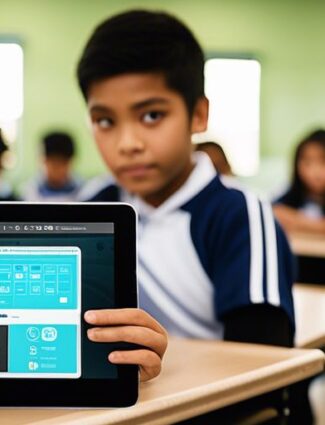



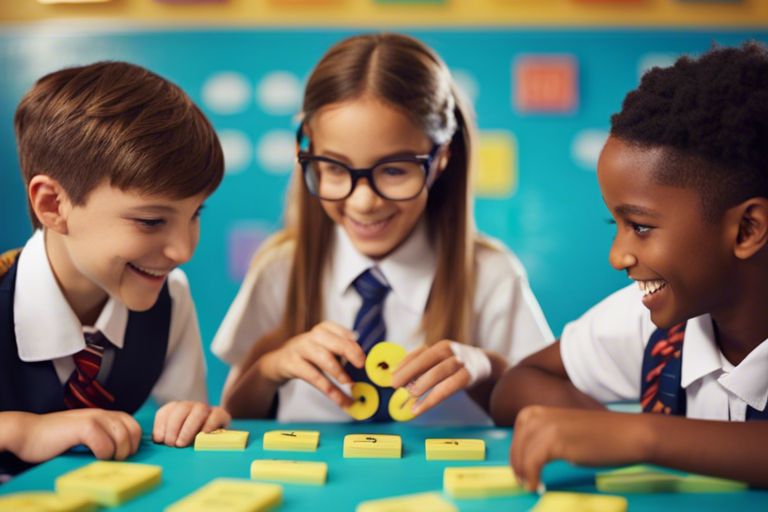


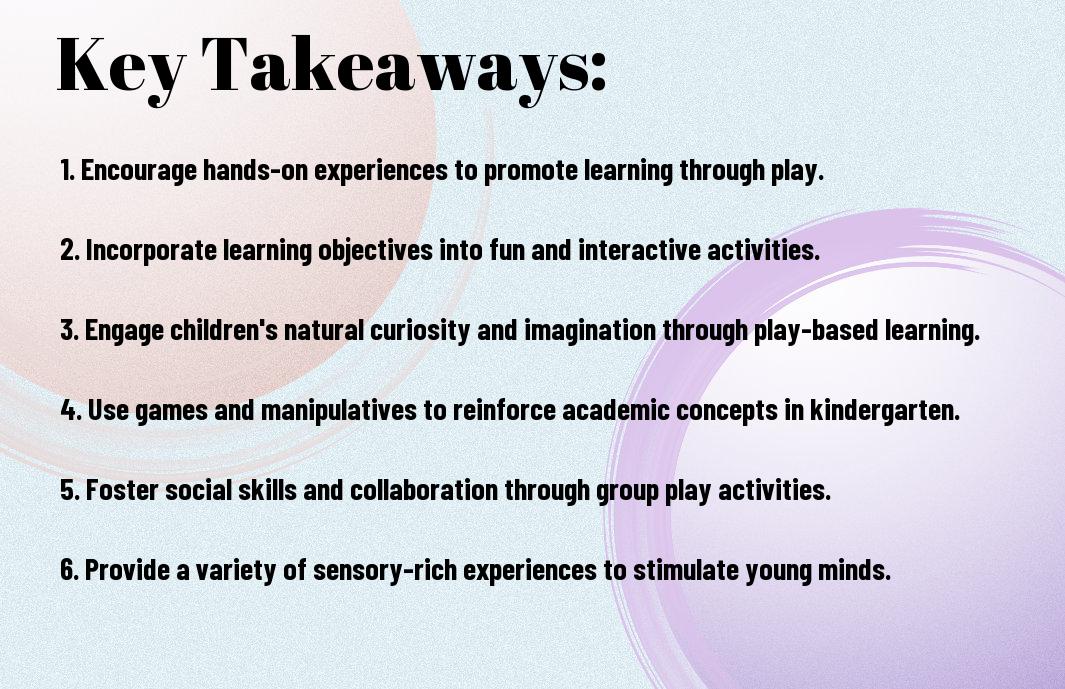


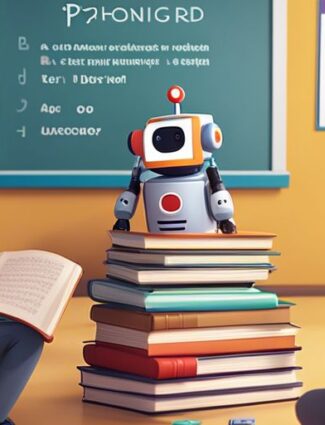
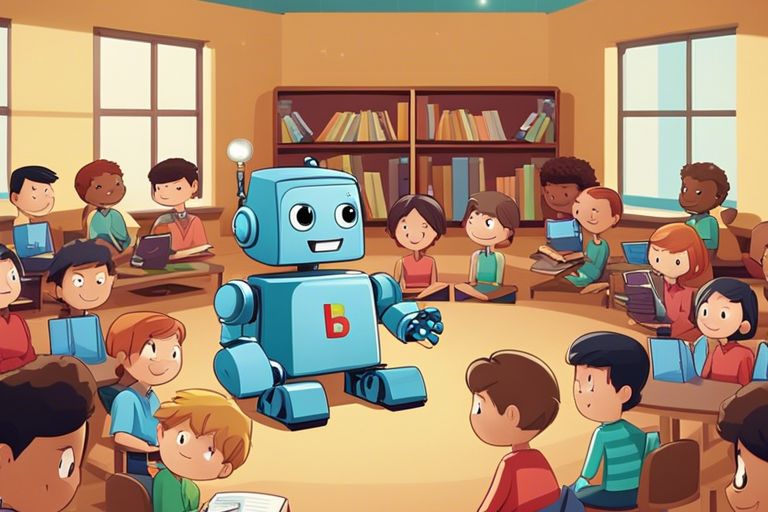

 Here is a guideline for writing the request:
Here is a guideline for writing the request:


